We know travel plans are impacted right now. But to fulfill your wanderlust, we'll continue to share stories that can inspire your next adventure.
When you travel, you may think you are aware of all of the risks and dangers you could face. You probably know to take the proper vaccinations when visiting certain countries, to stay in safe, well-lit neighborhoods, and to be aware of your surroundings.
But what about when it comes to what you eat? Could you be poisoning your body?
Around the world, certain foods can cause everything from mild food poisoning to, in extreme cases, death.
Read on to find out which foods should be consumed with caution — or, as the case may be, avoided at all costs.
Absinthe

Made with the leaves of wormwood — and mixed with green anise, fennel and other medicinal herbs — this high-alcohol liquor was invented by the Swiss in the 18th century, before quickly spreading into France. Pablo Picasso, Vincent van Gogh and Ernest Hemingway were known to sip the spirit, which was cheaper than wine.
Rumors that the drink caused hallucinations began to spread (some say by the winemakers) and the drink was banned for nearly 100 years. The U.S. lifted its ban on the controversial liquor in 2007.
While it won't cause hallucinations, the thujone chemical found in wormword has been found to cause seizures, kidney failure, muscle breakdown called rhabdomyolysis, tremors, dizziness and nightmares, among other conditions. Some call the drink poison due to studies that showed a high number of deaths among mice on thujone.
But don't be too freaked out: Properly made absinthe doesn't have enough thujone to cause harm. Just make sure not to buy it on the cheap from less-than-legitimate sources.
Ackee
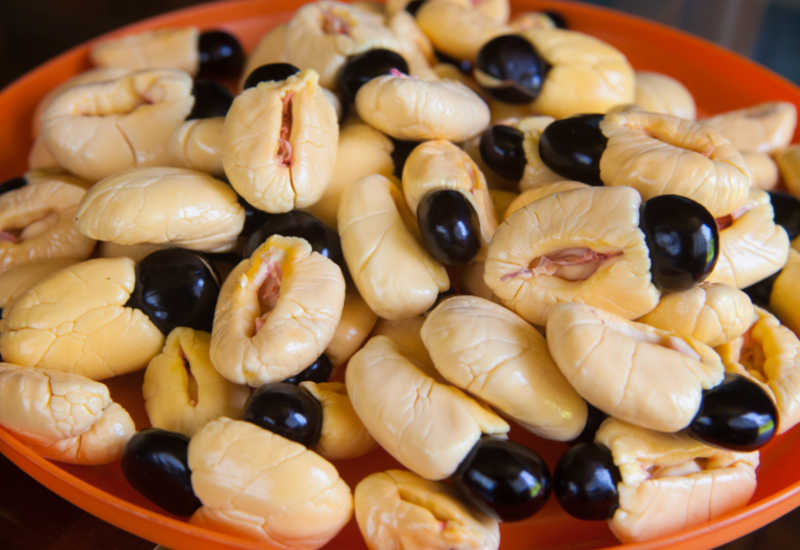
The most beautiful fruits can also be the most dangerous. Case in point? Ackee, a gorgeous, bright-red fruit that's popular in Jamaica.
While suitable for eating after cooking, immature ackee can make you sick, as the seeds inside are toxic. While only one in 1,000 people get poisoned by eating ackee in the Caribbean every year, the U.S. only allows for canned ackee to be sold, to ensure it is properly prepared.
Outside of the country, chefs who are pros with ackee can give you a taste — but don't attempt to pick and prepare it on your own!
Namibian Bullfrog
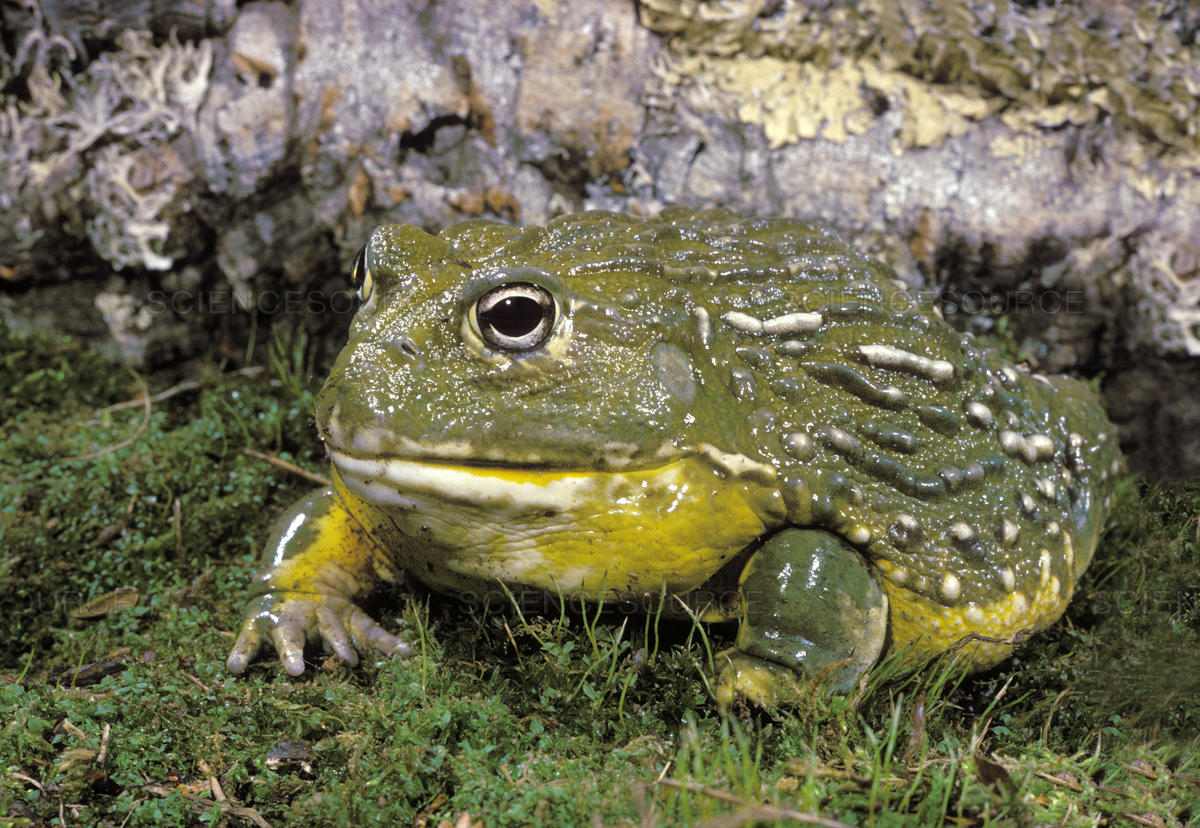
Frog legs are a delicacy in France, but in some African countries, they like to eat the entire animal — especially if it's a fat, juicy Namibian bullfrog.
The only hitch? This amphibian contains many toxins meant to ward off predators, including you.
The toxins, highly concentrated in young frogs that have yet to mate, have been found to cause kidney failure and even death. We'll pass, thank you.
Bean Sprouts
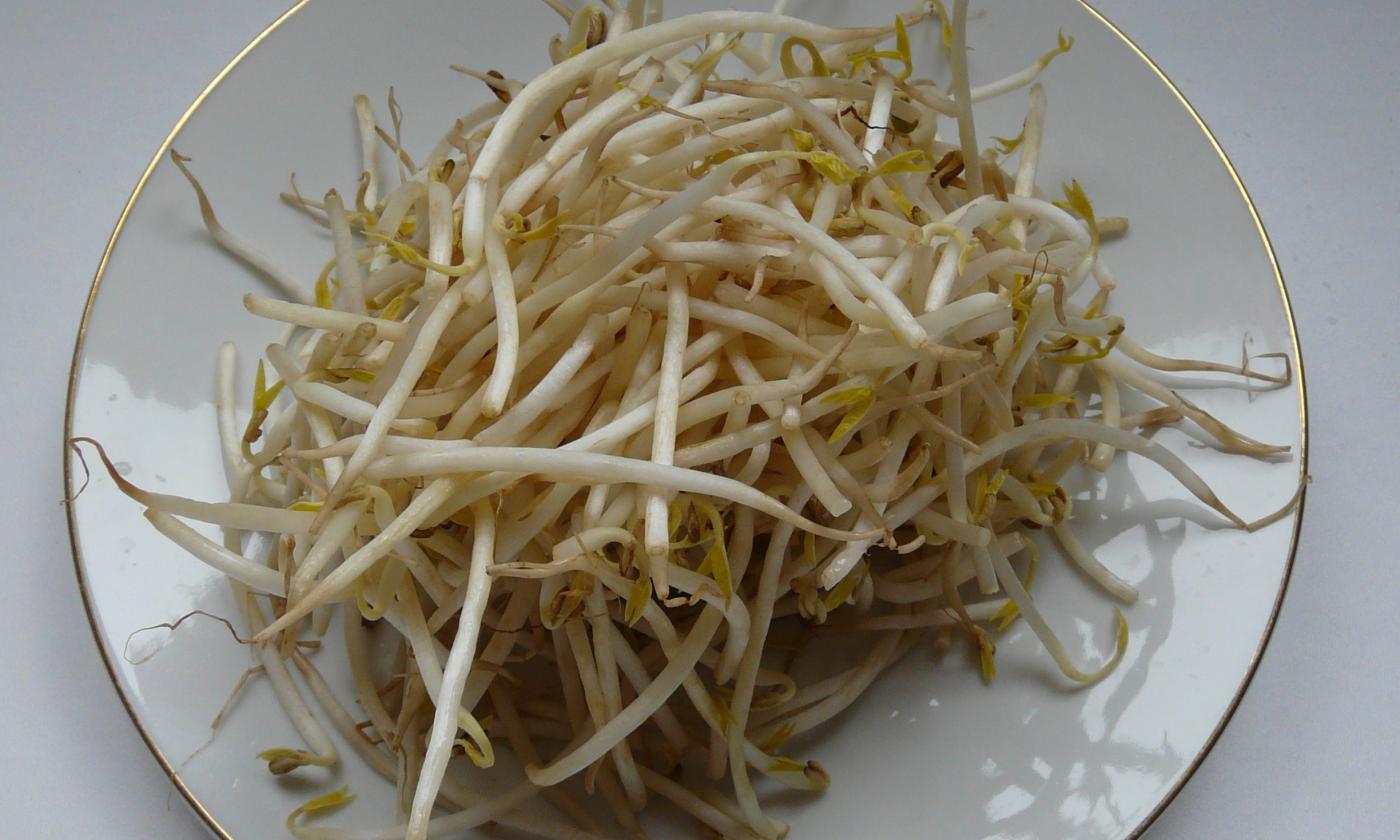
What could possibly be wrong with eating a bean sprout, you may ask? A lot, it turns out.
Sprouts are grown in warm, moist conditions — just the right combination for bacteria to grow. As a result, they may contain E.coli, salmonella and listeria, all of which can make you extremely sick.
Between 1996 and 2016, the Food and Drug Administration saw 2,474 illnesses, 187 hospitalizations and three deaths from sprouts.
Don't want to give them up? Cooking them will kill off the deadly bacteria.
Blood Clams
Blood clams, or cockles, are a treat in China, where they are boiled and eaten. It's risky business, as the clams often contain viruses that bring on hepatitis A, typhoid and dysentery. (They are harvested in polluted water.)
In 1988, Shanghai banned blood clams when more than 300,000 people developed hepatitis A — and 31 people died.
That hasn't stopped food markets from
Cassava
:quality(80)/granite-web-prod/c6/c1/c6c11a390b27426ba016b9494dcd46a3.jpeg)
This root vegetable popular in Africa and South America is perfectly fine when it is fully cooked and properly prepared. (Which is to say: boiled, fried, baked, grilled, mashed or steamed.)
Eat a bit of it raw, though, and you'll get a hefty dosage of linamarin, a toxic poison on par with cyanide.
This same toxin is found in flaxseed and at smaller doses can promote headache, agitation, confusion and trouble breathing. (Maybe you'll want to lighten up on the flaxseed, as well?)
Casu Marzu
:quality(80)/granite-web-prod/12/d4/12d4fa9bbeac4912ae44ce9407b57515.jpeg)
Ready to be thoroughly grossed out? In Sardinia they make a cheese that is so rotten it can make you severely sick. The cheese is left uncovered so maggots can land on it and lay eggs. The eggs hatch and maggots ferment the cheese. (We told you it was disgusting!)
Oh, and...it gets worse.
If you eat this cheese (which, it should be noted, is illegal) when it still has larvae inside of it, the larvae can bore holes through your intestines.
Hard pass.
Dragon's Breath
:quality(80)/granite-web-prod/79/be/79be783f10724a2ca83ff6f98e741e9f.jpeg)
While some like it hot, others like it torturous as they attempt to eat the hottest peppers known to man just to see if they can stomach it.
For a long time, many believed Carolina Reaper was the hottest pepper in the world, with 1.6 million heat units registered on the Scoville scale. But when Dragon's Breath was recently introduced, it brought the heat level to 2.48 million.
Just how hot is this? Well, a habanero pepper has 350,000 heat units and a Jalepeño only has 8,000, so you do the math.
The heat comes from the pepper's capsaicin. Too much can actually burn, not to mention close your airways and cause anaphylactic shock. Yikes!
Echizen kurage
:quality(80)/granite-web-prod/84/16/8416b50b50ff45318891553c5e1b840b.jpeg)
Known as Nomura's jellyfish in English, these giant jellyfish — the largest in the world — are bigger than humans and can sting you if you encounter them in the water. But they're really scary when eaten.
Toxins in the jellyfish known as glycoalkaloids can lead to cramping, diarrhea, headaches, and in the worst cases, comas and death.
Properly trained chefs can prepare the jellyfish as a delicacy without the toxins, but if any traces are left, it doesn't take much to lead to illness.
Elderberries
:quality(80)/granite-web-prod/2d/7d/2d7d646df36046388a45015ea0c86406.jpeg)
A berry is a berry, right? Not so fast! Eat the wrong berries, and you can get hit with food poisoning, suffering symptoms like vomiting, nausea and diarrhea.
One particularly dangerous berry may be mistaken for a blueberry due to its round, blue hue. But don't be fooled.
When eaten unripe and undercooked (especially raw), elderberries can bring on nausea, vomiting and severe diarrhea. In order to eat these safely, the berries must be ripe, cooked and void of any stems or leaves.
Feseekh
:quality(80)/granite-web-prod/08/d0/08d0f8424dfe4db995f3a9460cb87469.jpeg)
During the springtime Shem el-Nessim festival in Egypt, many get rushed to the hospital after eating feseekh, a fermented fish delicacy.
The fish is dried in the sun and then spends a year in salt. Unfortunately, this fermenting process can produce the bacteria Clostridium botulinum, which, if not prepared properly, may lead to botulism — paralysis that begins in the face and continues through the body.
If paralysis reaches the lungs, it can stop your breathing and result in death.
Greenland Shark
:quality(80)/granite-web-prod/20/ad/20ad69e487224c8182cbe028183aea33.jpeg)
Greenland sharks are, without a doubt, some of the most fascinating creatures in the animal kingdom. For one thing, they can live to be up to 500 years. For another, most of them are blind because they have parasites hanging from their eyes.
But the thing you really need to know about the Greenland shark is that you should be careful when eating it. If the shark meat hasn't been properly dried or soaked, you can get sick from consuming it, falling over or getting dizzy as a result of the toxins it contains.
You should be safe, however, if you buy fermented Greenland shark meat from a reputable shop in Iceland, where fermented shark meat — called hakarl — is the national dish. Just be warned that, well, it won't taste very good; Anthony Bourdain famously said hakarl was "the single worst, most disgusting and terrible tasting thing” that he had ever eaten.
Larb
:quality(80)/granite-web-prod/f7/73/f773f23e13214d7da044eac209398eab.jpeg)
The unofficial dish of Laos, larb (or laab) is a raw meat salad. What kind of meat is up to the cook's discretion, which, as you can imagine, sometimes causes problems.
Last year, raw wild boar meat in Thailand caused a deadly infection of Streptococcus suis, killing two dozen people.
In California, 12 people were sickened with trichinellosis in 2016 after eating raw wild boar larb. Victims presented symptoms of abdominal pain, vomiting and diarrhea after they inadvertently consumed worms in the meat.
In fact, eating raw meat of any kind comes with risks, including contracting rabies if the meat is from a rabid animal.
Live Octopus
:quality(80)/granite-web-prod/61/f7/61f7bd97b0334d7290d766d9041921d0.jpeg)
Considering it can be a pretty grisly affair, we're not sure why Koreans like to eat "live" octopus.
To be fair, the octopus itself is dead, but the tentacles of the freshly killed animal may have suction cups that are still active.
One YouTuber in China filmed her ordeal of attempting to eat a live octopus while filming. (Warning: The video is graphic!) While she was able to free herself, safety officials warn that the suction cups can latch on to the tongue as it is being swallowed, leading to choking.
Monkey Brains
:quality(80)/granite-web-prod/1e/7c/1e7cc32abf6945a98febd99436316df8.jpeg)
To many, monkey brains probably sound utterly unappetizing. But the real issue with this Asian dish is the dangers it poses.
Eat the brain of a monkey, and you may contract a disease known as Creutzfeldt-Jakob. This brain disorder is degenerative, meaning your brain will turn to mush as you slip into dementia and eventually die.
Sounds like something out of a horror movie!
Peanuts
A peanut allergy is no joke, especially to the .6 percent of Americans living with one. Even traces of a nut's dust can cause a person unable to process its proteins to suffer impaired breathing as their throat swells, leading to anaphylaxis.
Other symptoms include a drop in blood pressure (also dangerous), fainting and dizziness.
This is why kids cannot have peanut butter in schools.
Pufferfish
:quality(80)/granite-web-prod/82/e6/82e680caaf4840839ff927951e2f618c.jpeg)
It seems playing Russian Roulette is popular in Japan, where the delicacy known as fugu features raw puffer fish that can lead to death.
Chefs must be properly trained in how to handle and serve the fish because it contains a deadly poison that, in a mere instant, can kill anyone who takes a bite.
The internal organs in the fish contain tetrodotoxin, which can be up to 1,200 times more deadly than cyanide. One fish has enough of the toxin to kill off 30 people.
Taking a bite means taking a chance — there is no antidote to tetrodotoxin. According to the Japanese Ministry of Health, 50 people suffer from fugu poisoning in a typical year, and half of all food-poisoning deaths in the country are a result of eating the pufferfish.
Raw Cashews
:quality(80)/granite-web-prod/7d/f0/7df03603b73b4057bc01ddd51985e7cb.jpeg)
Speaking of a nut allergy, every single one of us will have a chemical reaction to raw cashews. No, we aren't referring to the ones found in stores — they have been steamed to remove the plant's dangerous chemical, called urushiol.
Raw cashews — which are actually seeds growing on the outside of fruit found on tropical trees — contain the same chemical found in poison ivy, leading to rashes and swelling. When consumed, the chemical can be fatal.
The good news? Even cashews marketed as raw that are sold at stores have been heated enough to be safe. Issues arise only when they haven't been properly processed.
Raw Milk
:quality(80)/granite-web-prod/b0/e0/b0e0f1716cf64d2fb2f91444a54cb829.jpeg)
The U.S. has determined unpasteurized milk to be dangerous, despite the fact that other countries still enjoy raw milk and unpasteurized cheeses. Raw milk may contain E. coli,salmonella, listeria and other bacteria that lead to food poisoning.
That said, there are many who claim raw milk is actually healthier, offering more calcium, vitamin D and probiotics.
Rhubarb
:quality(80)/granite-web-prod/6b/bc/6bbc96505faf43119424d99e09257530.jpeg)
A good rhubarb pie won't harm you; instead it's the red-stemmed plant's leaves that want to kill you.
Containing oxalic acid, these leaves can lead to diarrhea, nausea, trouble breathing, burning in the mouth and eye pain if digested. In more serve cases, the acid can even cause kidney failure.
Silver Stripe Blaasop
:quality(80)/granite-web-prod/86/2f/862f82467b6646f1ac3fbb691fd9c25b.jpeg)
Found in the Indian Ocean and the Mediterranean Sea, the Silver Stripe Blaasop fish is a delicacy in many coastal towns. But if not prepared correctly, this fish may lead to breathing and circulation problems and even cause paralysis when eaten.
The aptly named fish contains a toxin within its liver, reproductive organs and skin. Ten deaths occurred in in Egypt and Israel in 2007, prompting a warning against eating it.
Star Fruit
:quality(80)/granite-web-prod/d3/8f/d38ff8a0561642219839c14b9d5eb226.jpeg)
Such a pretty tropical fruit. But that is how it seduces you before feeding you its caramboxin toxins.
Especially damaging to those with kidney disorders, the toxin can result in seizures and even death. (It also may cause you to feel intoxicated; it's up to you to decide if that's a danger.)
Those without a history of kidney disease, though, should be able to enjoy the star fruit.
Shellfish
:quality(80)/granite-web-prod/d8/57/d8576504e36343e3b61e87d40cc56e09.jpeg)
The proteins found in crustaceans and mollusks, including lobster, scallops, crab, oysters and shrimp, can cause an allergic reaction in a lot of people. And we do mean a lot — some 7 million people in the U.S. alone develop this allergy!
Symptoms can come on as soon as a bite is taken and may be as mild as a rash and itchiness and as severe as the inability to breathe, requiring an emergency does of adrenaline.
Also scary? A shellfish allergy can come on as we age, so the foods we're used to loving may suddenly not love us back.
Tapioca
:quality(80)/granite-web-prod/b4/2e/b42e7e52b1fc4261bf3b40857852ba9b.jpeg)
Remember that linamatin found in cassava? It's found in tapioca, as well. In fact, tapioca flour is made from the starch of cassava root.
If tapioca is not correctly refined, those cyanide-like toxins can poison those who consume it, even leading to death.
Don't worry, though: Your bubble tea should be fine! Just be careful if you think the substance has possibly not been correctly refined.
Wild Mushrooms
:quality(80)/granite-web-prod/a3/42/a342850835b54658ad3bcb62e3a63c7a.jpeg)
In case you have never seen a movie where a character dies quickly after ingesting wild mushrooms, we're here to remind you to never pick mushrooms to eat on your own. Getting the wrong mushroom can cause vomiting and stomach pain as well as liver, kidney and heart damage.
Some of the most deadly mushrooms include the aptly named Death Cap (shown). While the Death Cap can have a red top to help it stand out as dangerous, it sometimes lacks that bright indicator and blends in with other mushrooms.
The Western Pennsylvania Mushroom Club estimates there are 10,000 species of mushrooms in North America, up to 100 of which are potentially lethal — do you want to take that chance?

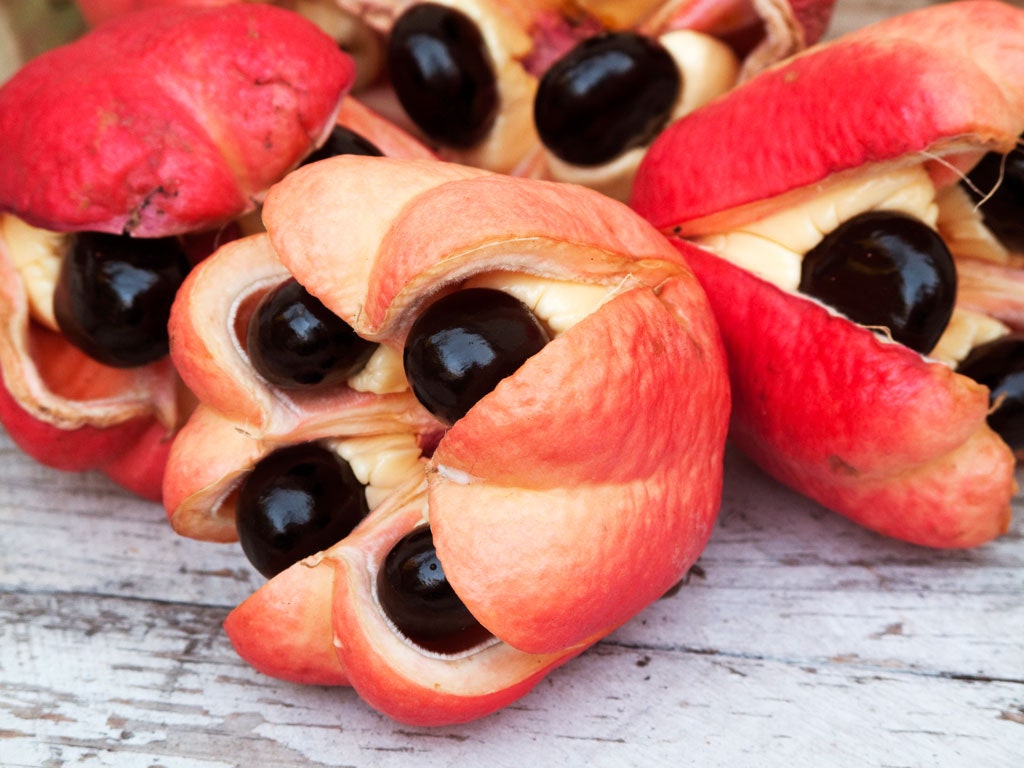
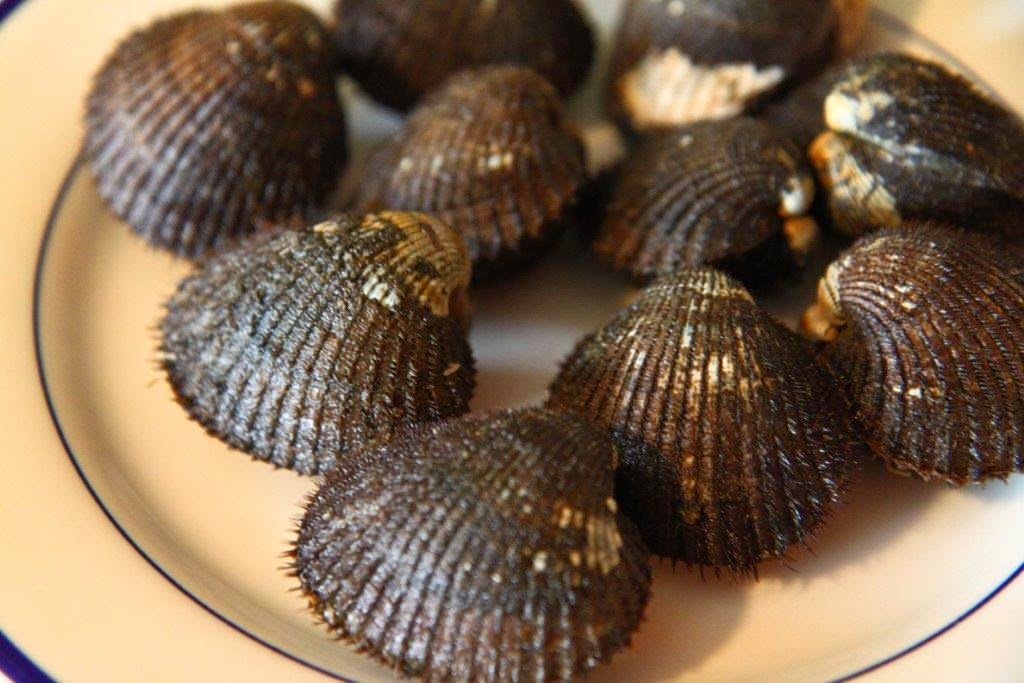
:quality(80)/granite-web-prod/d1/6d/d16dc9bd3d084a0bb5bf4410b3b69916.jpeg)
